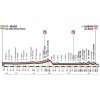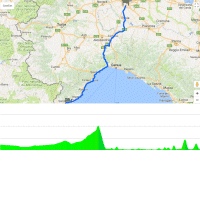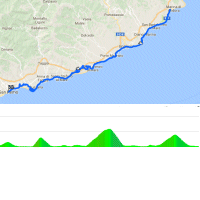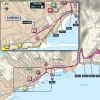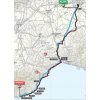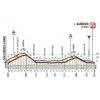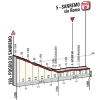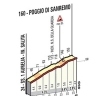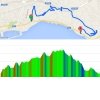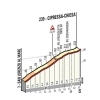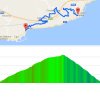Last year, Vincenzo Nibali won Milan-San Remo with a brilliant solo. He attacked on the Poggio and crested the summit 12 seconds ahead of the chasing peloton, which was just enough. He held off the chasing peloton by a few bike lengths. Caleb Ewan and Arnaud Démare sprinted to second and third place.
La Primavera, the ‘spring classic’, marks the real start of the Classics season. The first Monument of the year opens with a long stretch on the Po Plain before the riders cross Passo del Turchino to reach the Mediterranean. A long and easy climb with shallow gradients. The 25 kilometres uphill slopes at 1.4%.
The route continues on the flat to the Capo Mele, Capo Cervo and Capo Berta. A perfect trio to warm up for the final combo, Cipressa and Poggio.
What creates the most difficulty in Milan-San Remo is the sheer distance of 291 kilometres. After so long in the saddle, the finale is always exciting as the dynamics between those looking to escape and those looking to keep it together create a fast and frenetic ending.
First the Cipressa, 5.5 kilometres at 4.1% and a steepest section of 9% a little over halfway up. A great place for a break away as there are just over 20 kilometres remaining at the summit.
On to the famous Poggio. Last chance to escape the bunch with riders having varying degrees of success over the years, although last two editions saw decisive moves on the Poggio. In 2017, Michal Kwiatkowski, Peter Sagan and Julian Alaphilippe attacked on the climb. Following a brilliant descent the race came down to a thrilling three-up sprint with the Pole turning out on top. Last year Nibali opted for a similar scenario in solo style.
So, although Milan-San Remo is often viewed as a sprinters Classic, the finale with the Cipressa and Poggio combo provide opportunities for punchy climbers, northern Classics strong men and breakaway specialists to try and escape the clutches of the sprinters. It’s a very finely balanced finale.
The Poggio is 3.7 kilometres long and the average gradient is 3.7%. Not very impressive, but after almost 300 kilometres of racing it takes a huge effort for the bigger riders to get over at the front. The slope peaks at 8% with 1 kilometre left to climb.
The last 2.35 kilometres of Milan-San Remo are flat and perfect for any sprinter who is still in the mix.
Other interesting reads: results/race report and start list of Milan-San Remo 2019.
Milan-San Remo 2019: route, profiles, more.
Click on the images to zoom
